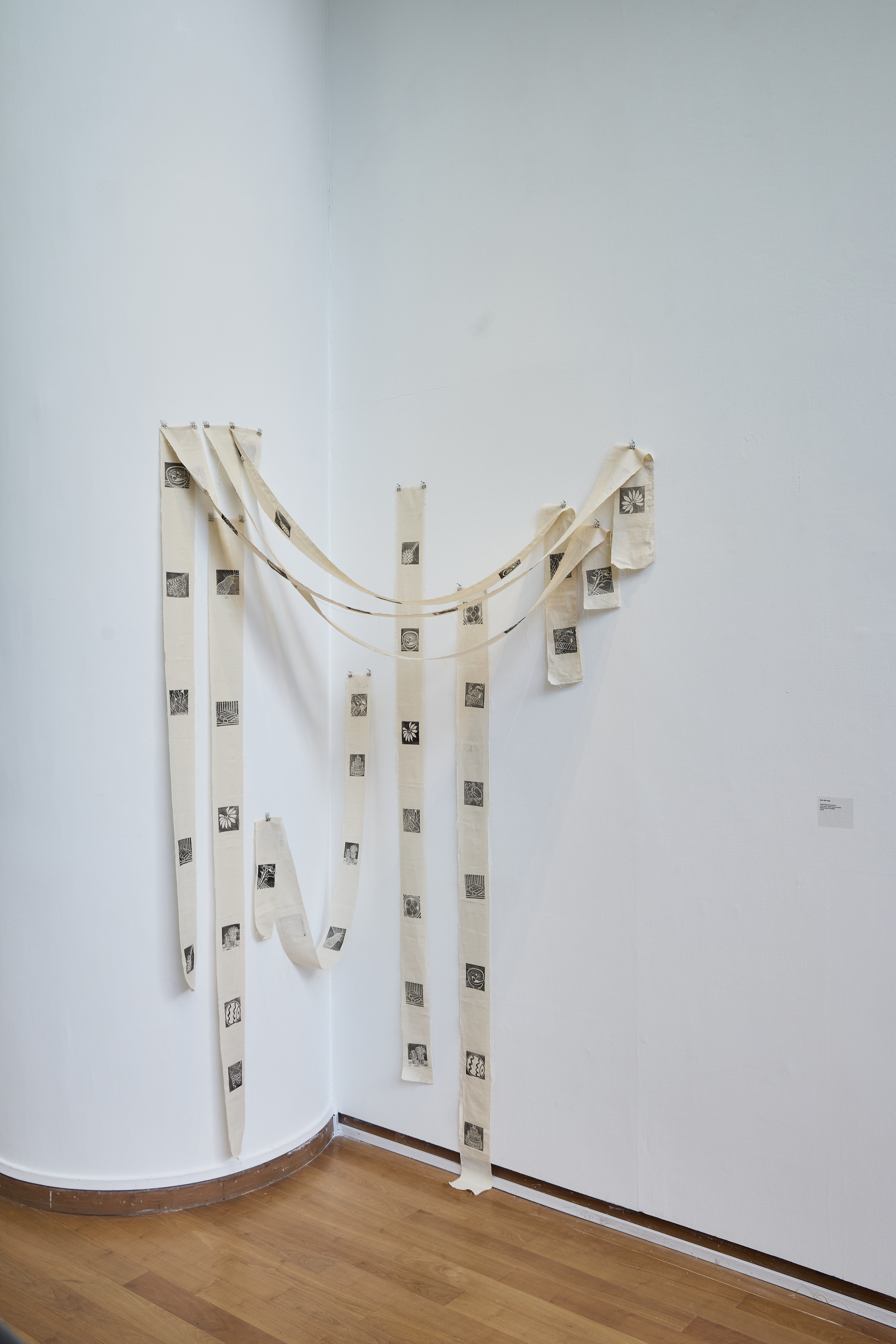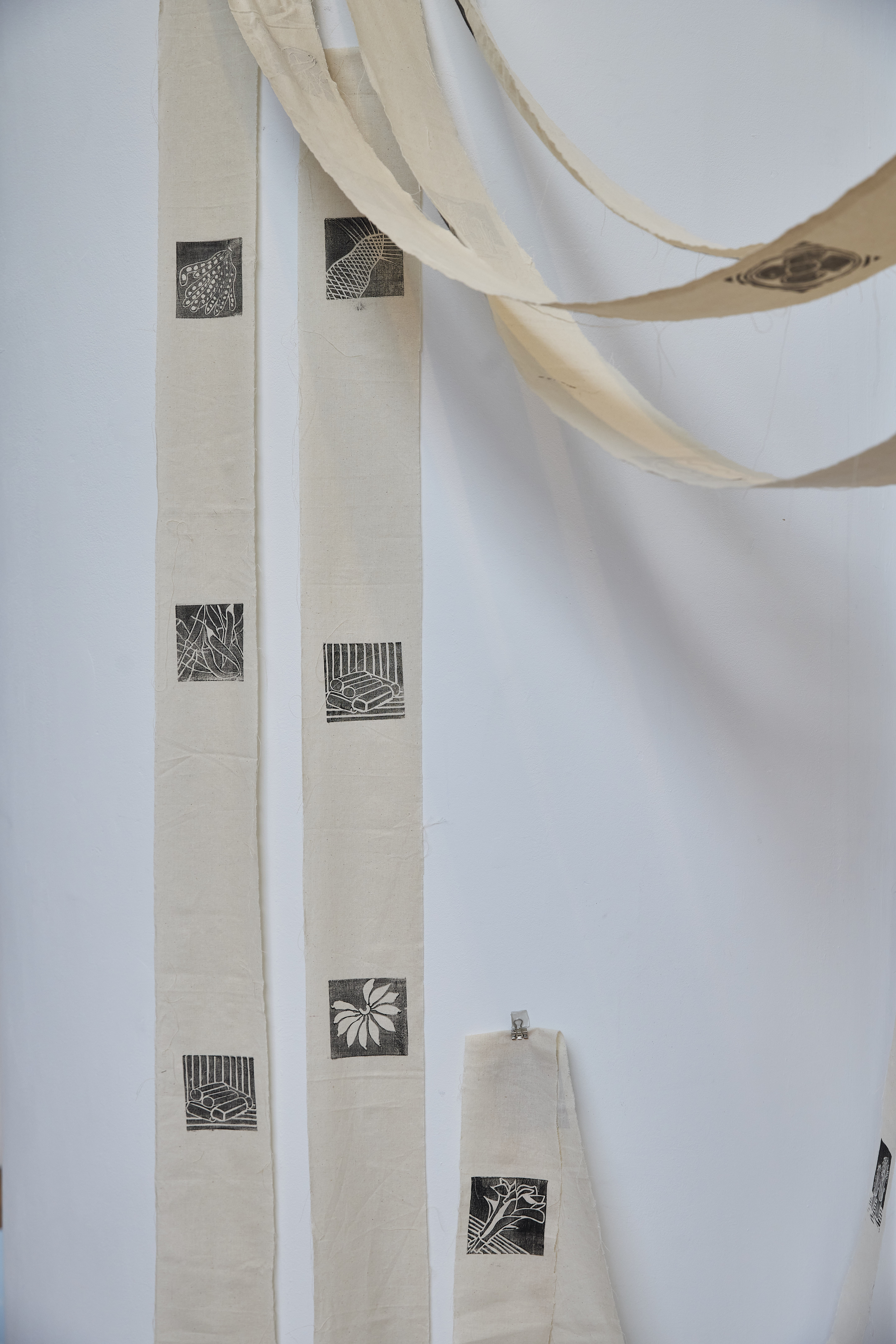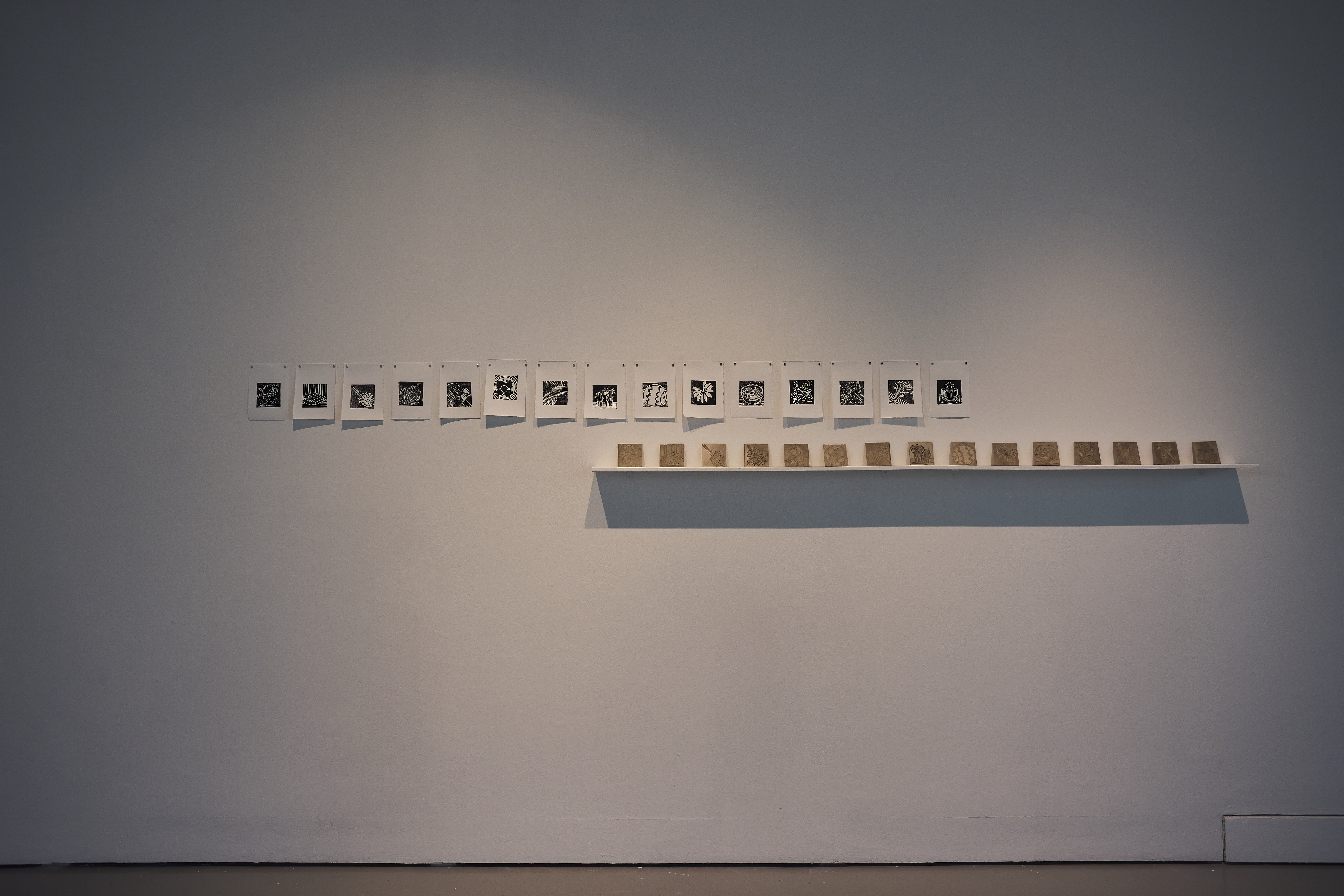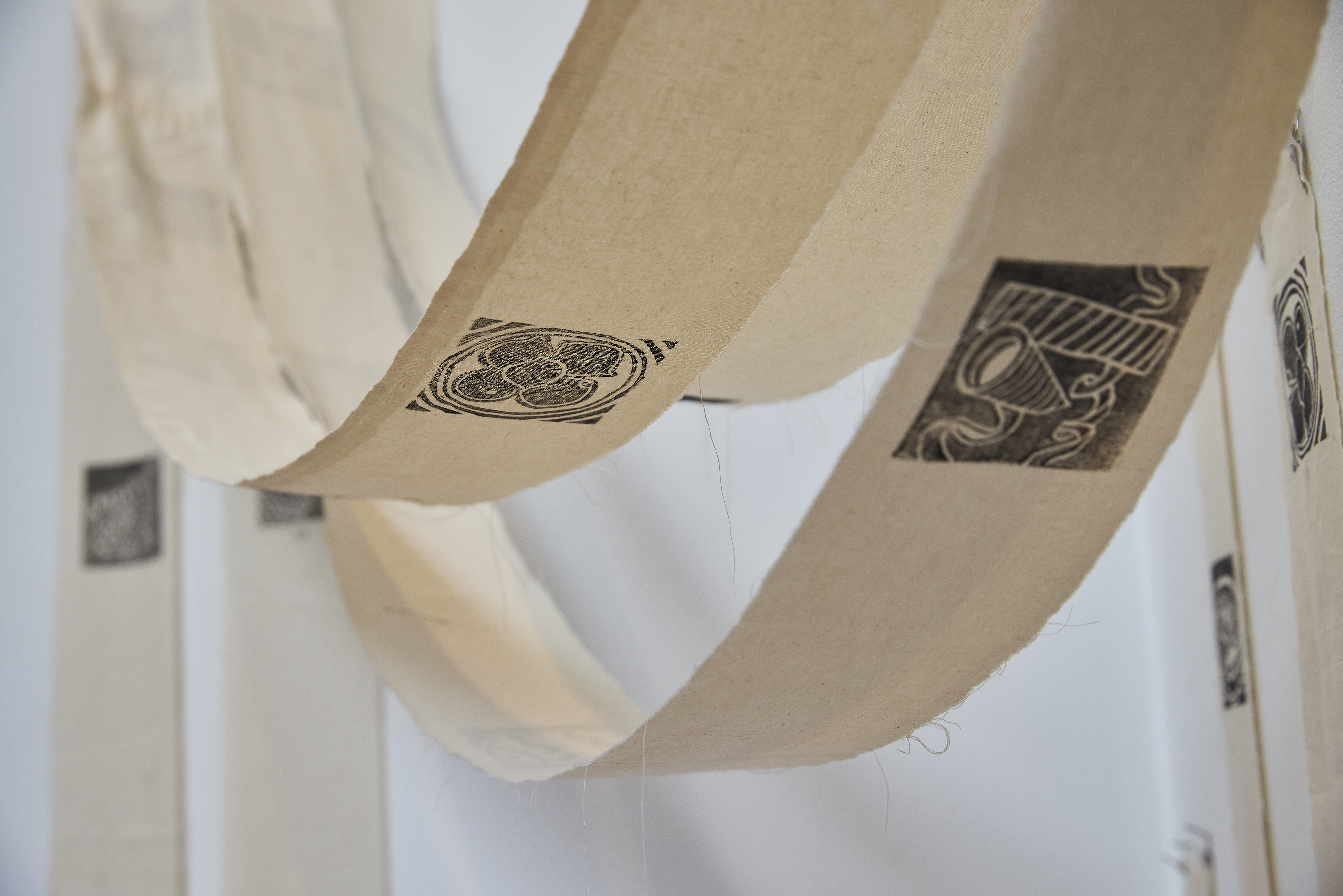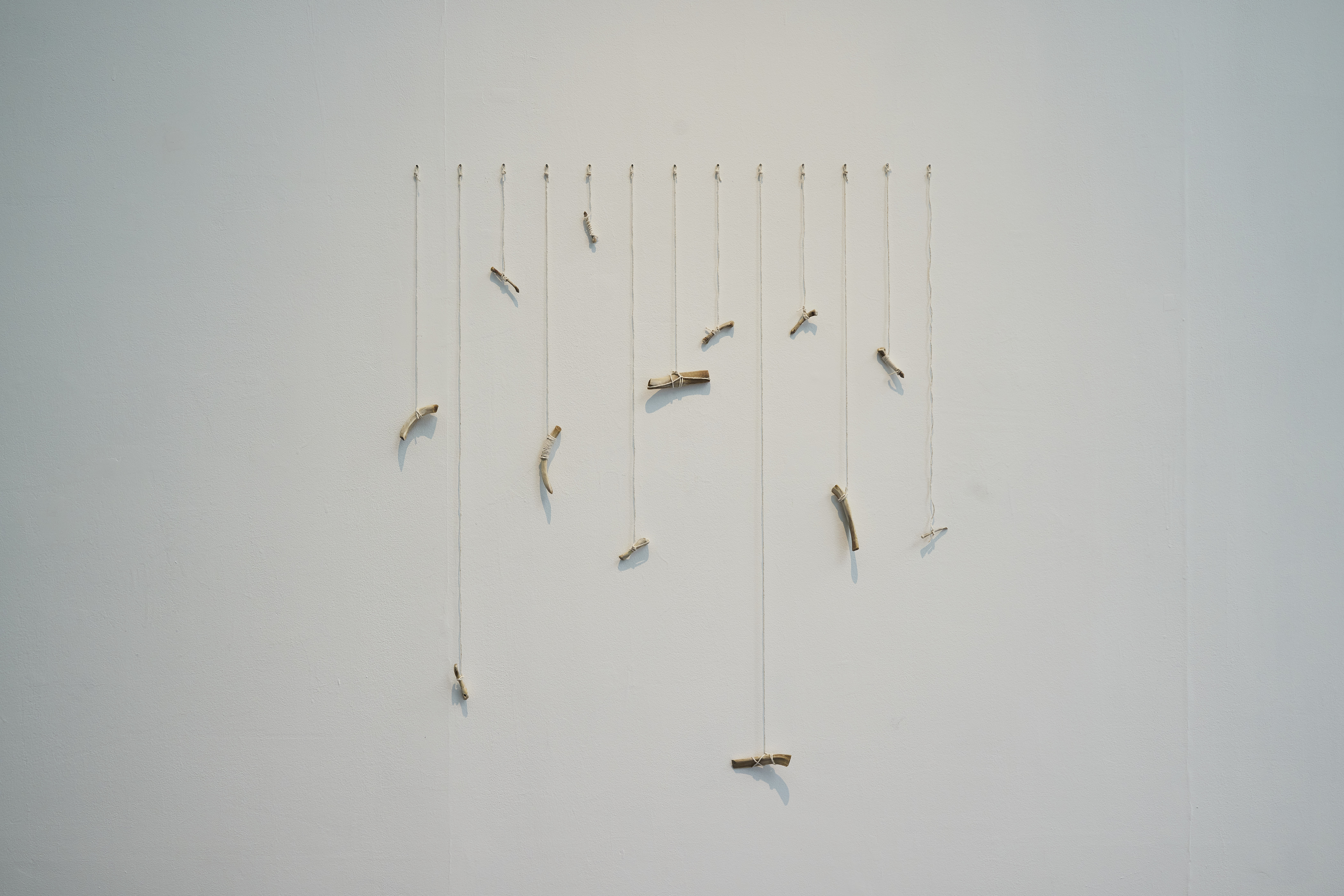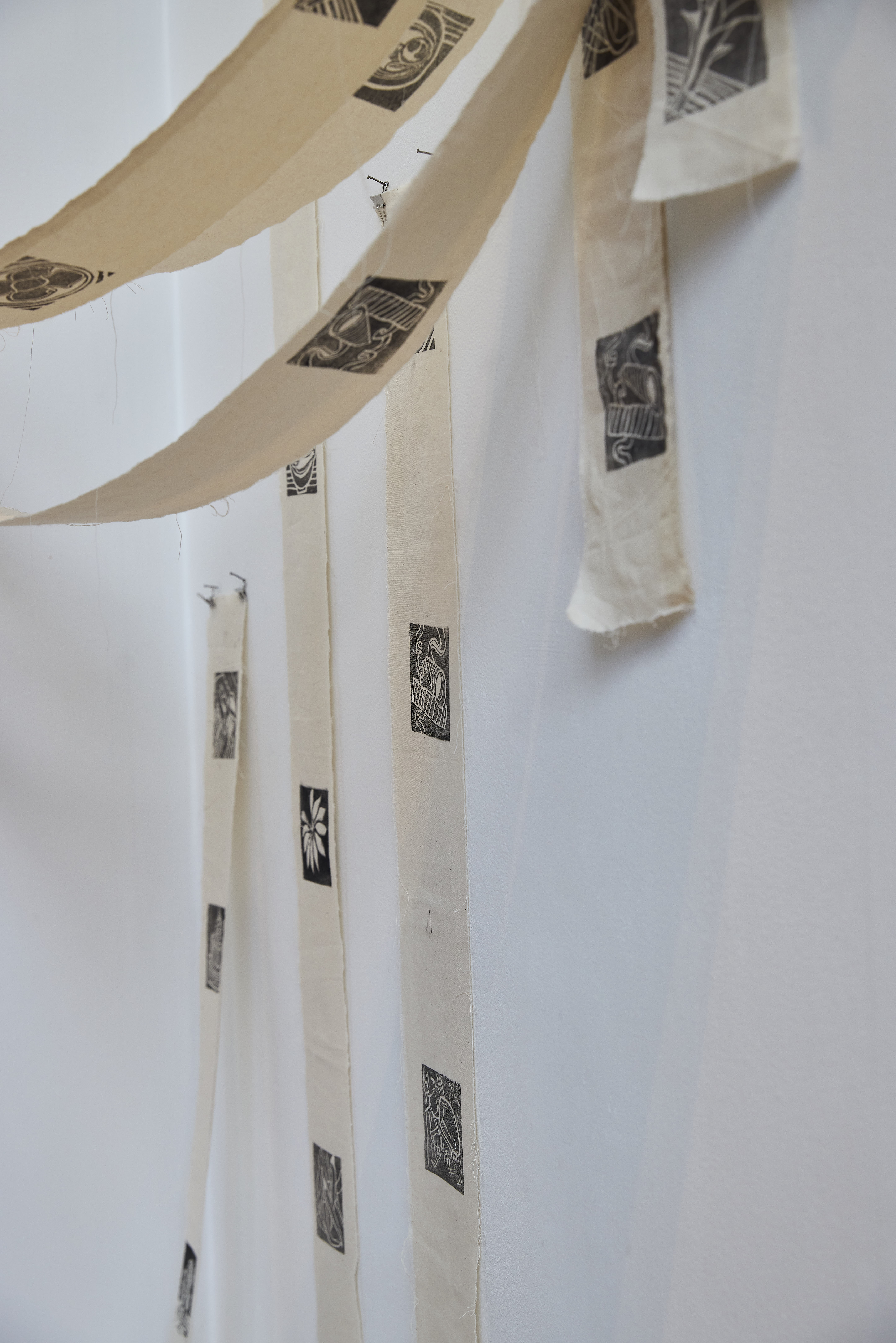Desnando Sarlim
1. Homey (2023)
2. 2 cheeseburgers and a big mac (2023)
1. Miniature installation. Materials: Ceramics, fabric, tree bark & miscellaneous items.
2. Clay pieces
1. 30 cm x 30 cm (approx.)
2. 15 x 15 cm each. (approx.)
1. An installation focused on the feeling of warm and comfort that a home brings. I felt that at certain moments in each longhouse I went to. The hospitality and warm welcome fueled me to create this piece, recreating a miniature room with cartoon-patterned sheets, food, as well as vessels that hold them.
2. Echoing the theme of food & vessels, these works are pieces that are meant to hold food, accessories, trinkets, that you might see scattered around a home. They also indirectly ties in to certain elements (fire, water, earth) that are involved in the harvesting and cooking process.
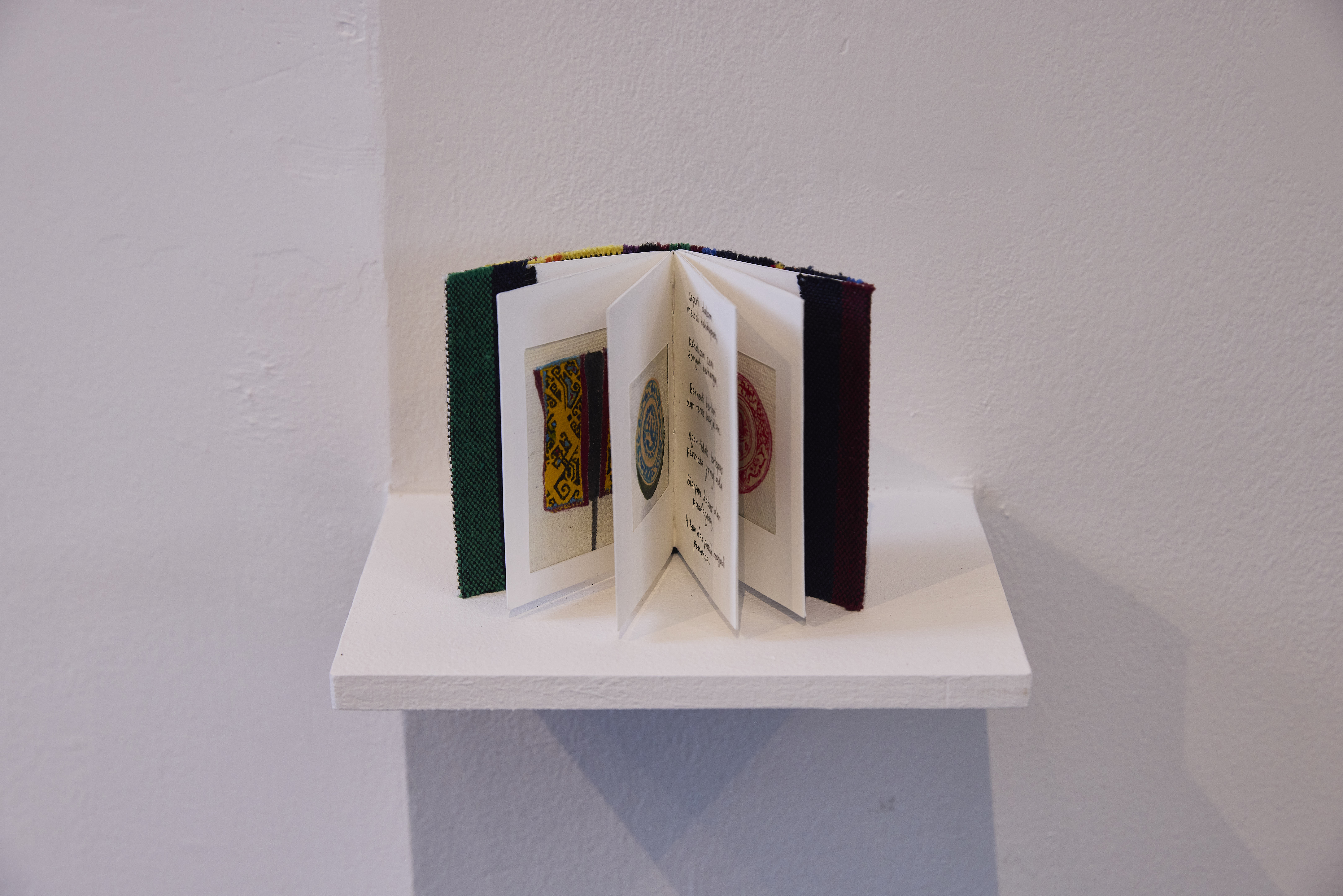


.
Dk Aiman Batrisyia Binti Pg Md Darwisy
1. Corak Batik
2. Corak Selampai 3. Corak Pekah 4. Corak Suku Kaum 5. Kabo
2. Corak Selampai
| 1. Delica Beads and thread |
| 2. Delica Beads and thread |
| 3. Delica Beads and thread |
| 4. Delica Beads and thread |
| 5. Delica Beads, thread and metal findings |
| 1. Dimensions variable |
| 2. 9cm x 3.5cm |
| 3. 11cm x 4.5cm |
| 4. 9cm x 4.5cm |
| 5. 10cm x 3.5cm |
| 6. 1.8cm x 1cm |
| These beadworks are inspired by the beautiful, intricate patterns crafted by Sarawakians for cultural purposes, preserving their traditions through generations. As I embarked on this travelogue trip to Sarawak, the memories of my Sarawakian grandmother were rekindled. These artworks also serves as a heartfelt tribute to her. |
| Artwork 1: [Corak Batik] Corak Batik takes inspiration from the intricate handwoven batik textiles of Sarawak. Artwork 2: [Corak Selampai] Corak Selampai is influenced by the patterns of traditional beaded sashes of Sarawak. Artwork 3: [Corak Suku Kaum] Corak Suku Kaum draws inspiration from tribal patterns found in tattoos, textiles, and shields. Artwork 4: [Corak Pekah] Corak Pekah is inspired by the ethnic headgears of Sarawak, particularly those worn by the Kiput tribe. Artwork 5: [Kabo] Kabo finds its inspiration in the Sarawakian Orang Ulu Kabo necklaces and bracelets. The Kabo has always been a significant tribal accessory, still vibrant in its original chili red color to this day. |

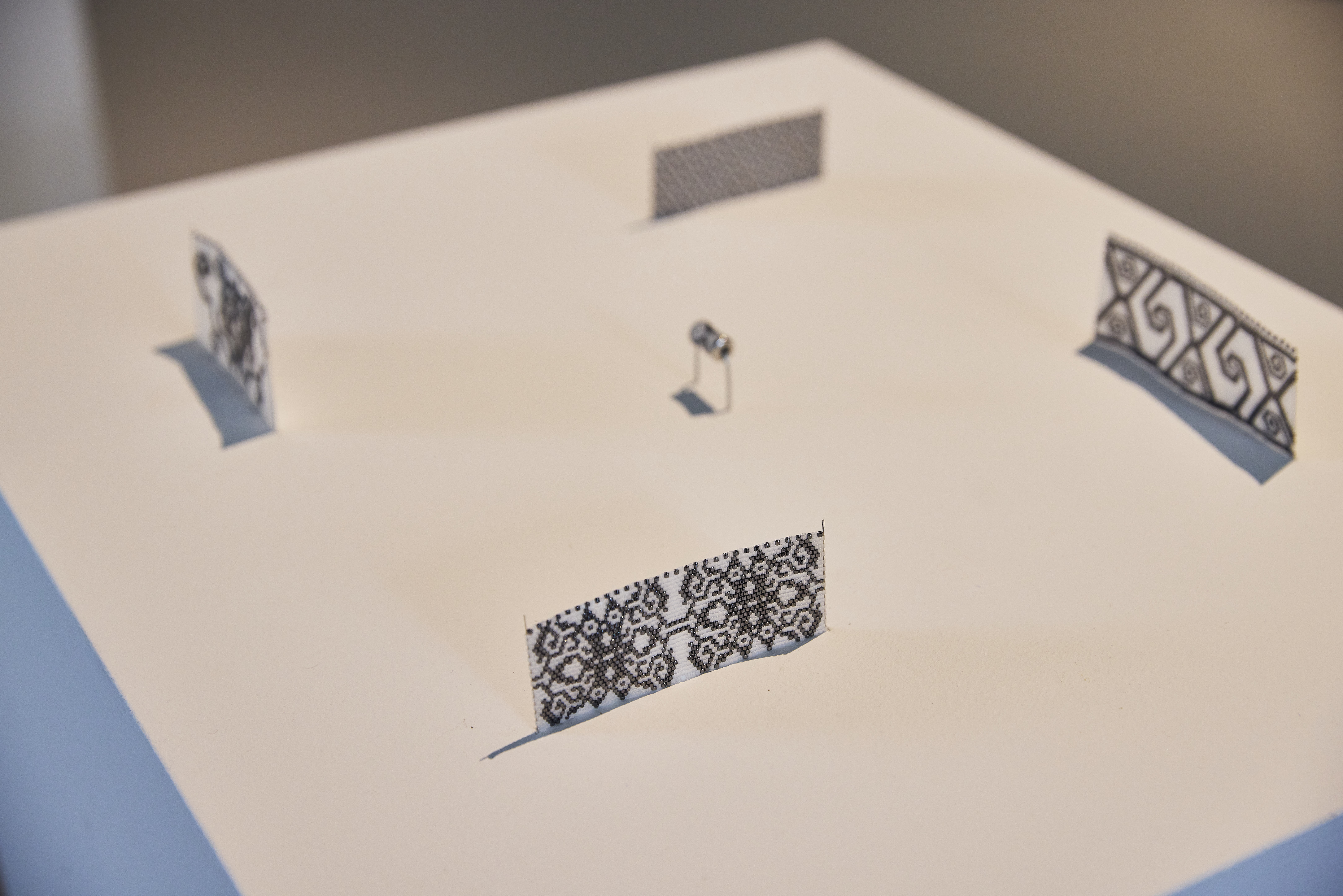
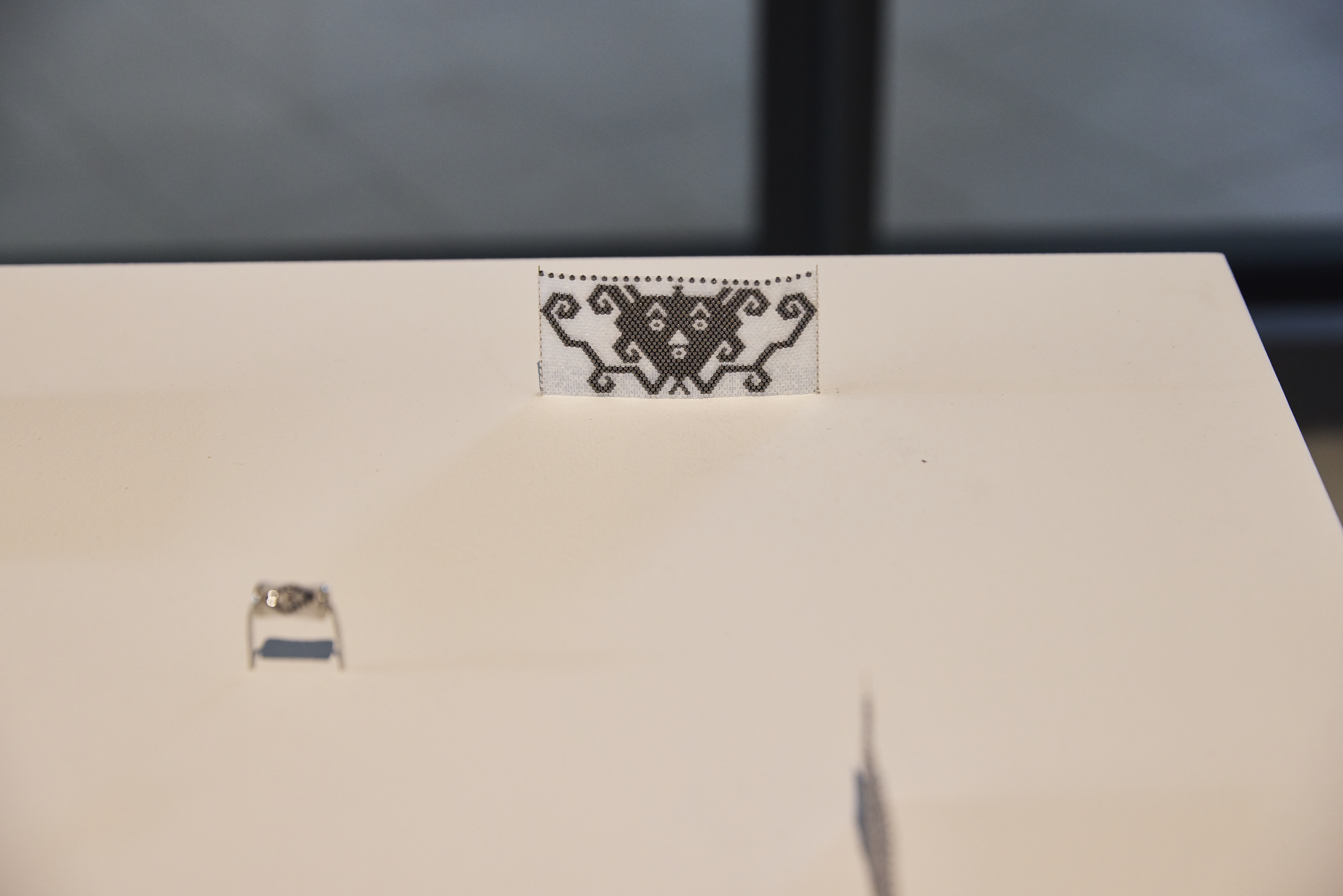
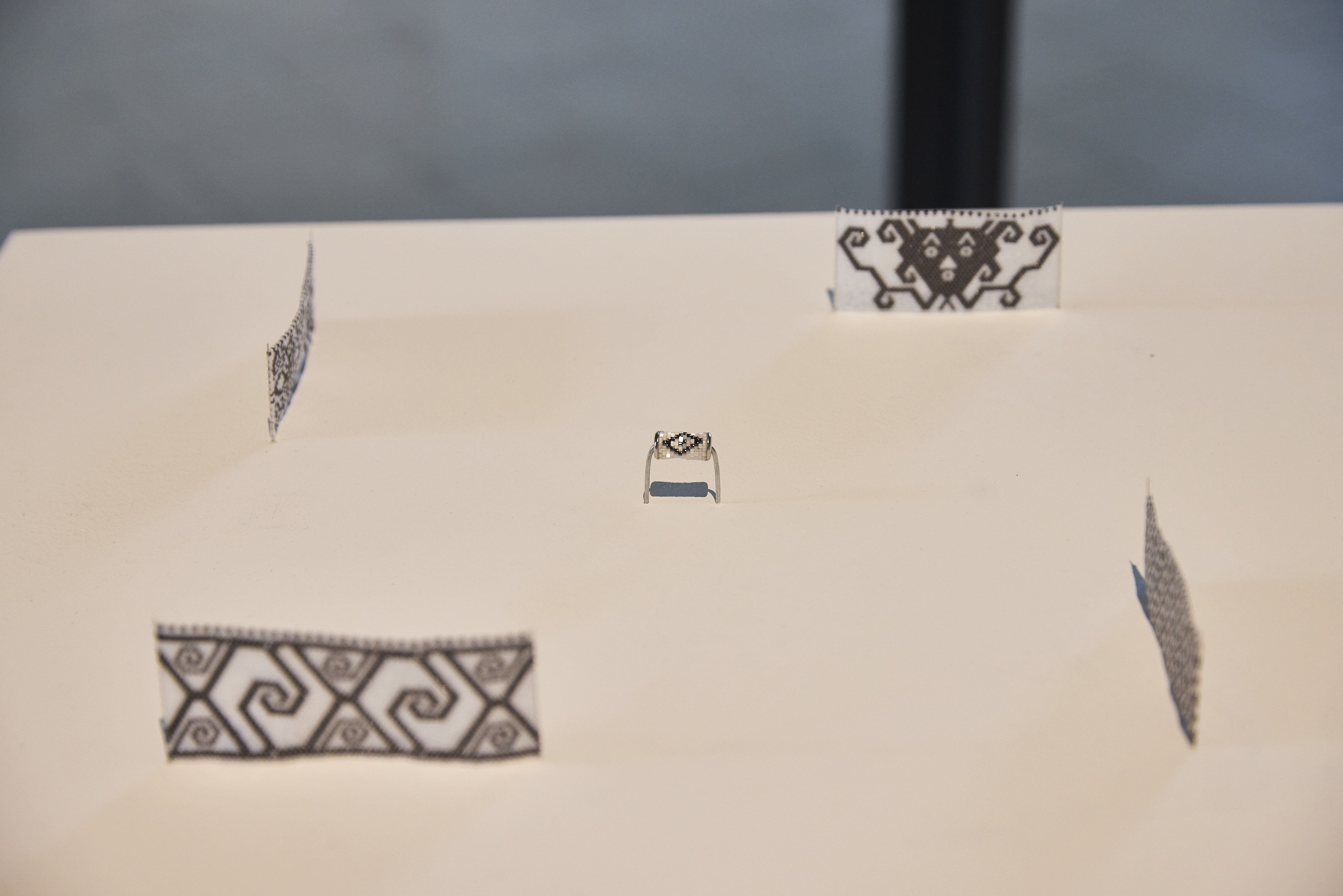
Isa Pengskul
1. Rainforest charades 2. Rainforest charades 3. Sight/seeing 4. I went to Sarawak and what I got was... 5. In the forest they made... 6. At the river's edge I saw...
(2023)
| 1. ink on paper |
| 2. video |
| 3. leaf, wire, lens |
| 4. inkjet print on washi paper |
| 5. inkjet print on paper |
Dimensions variable

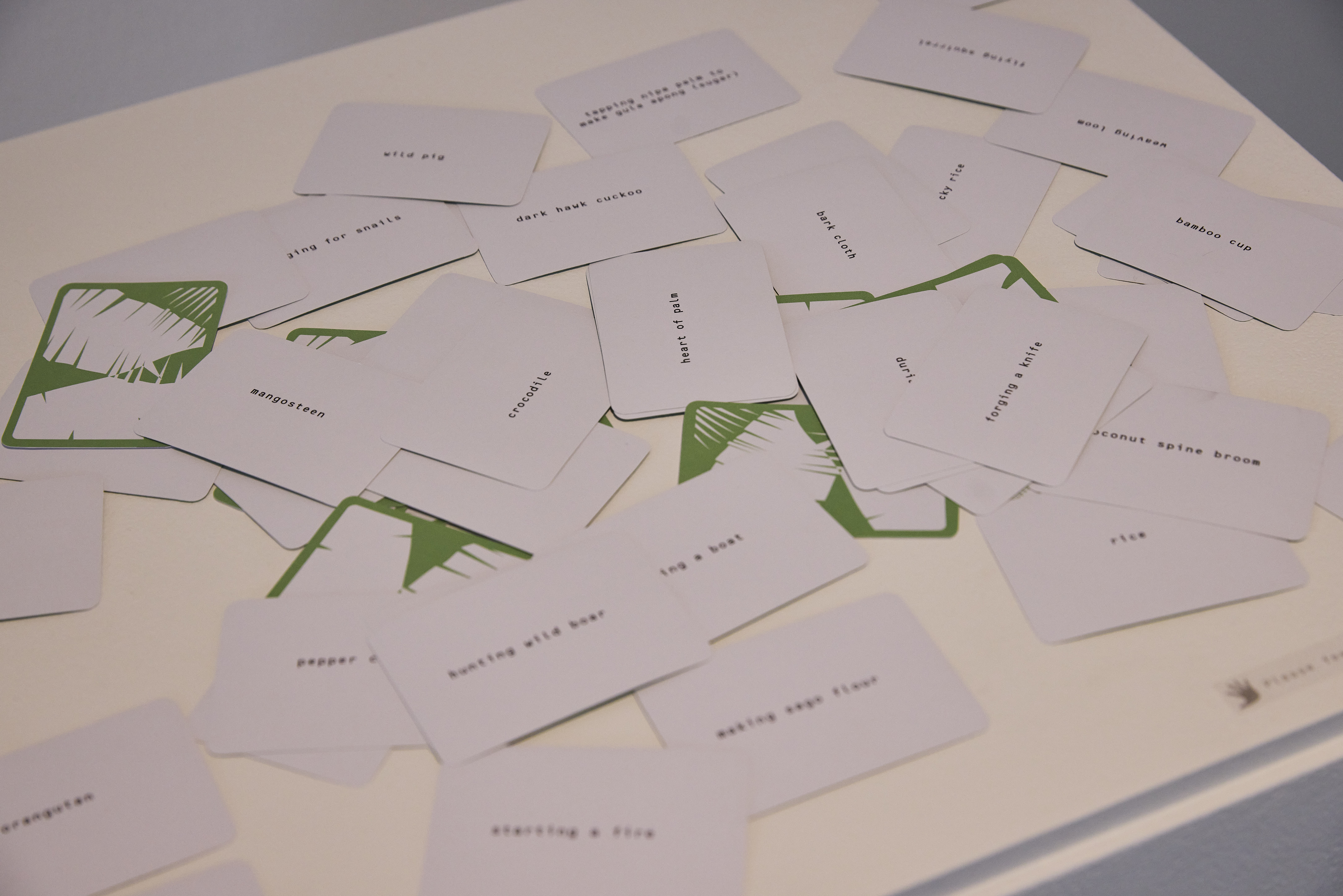
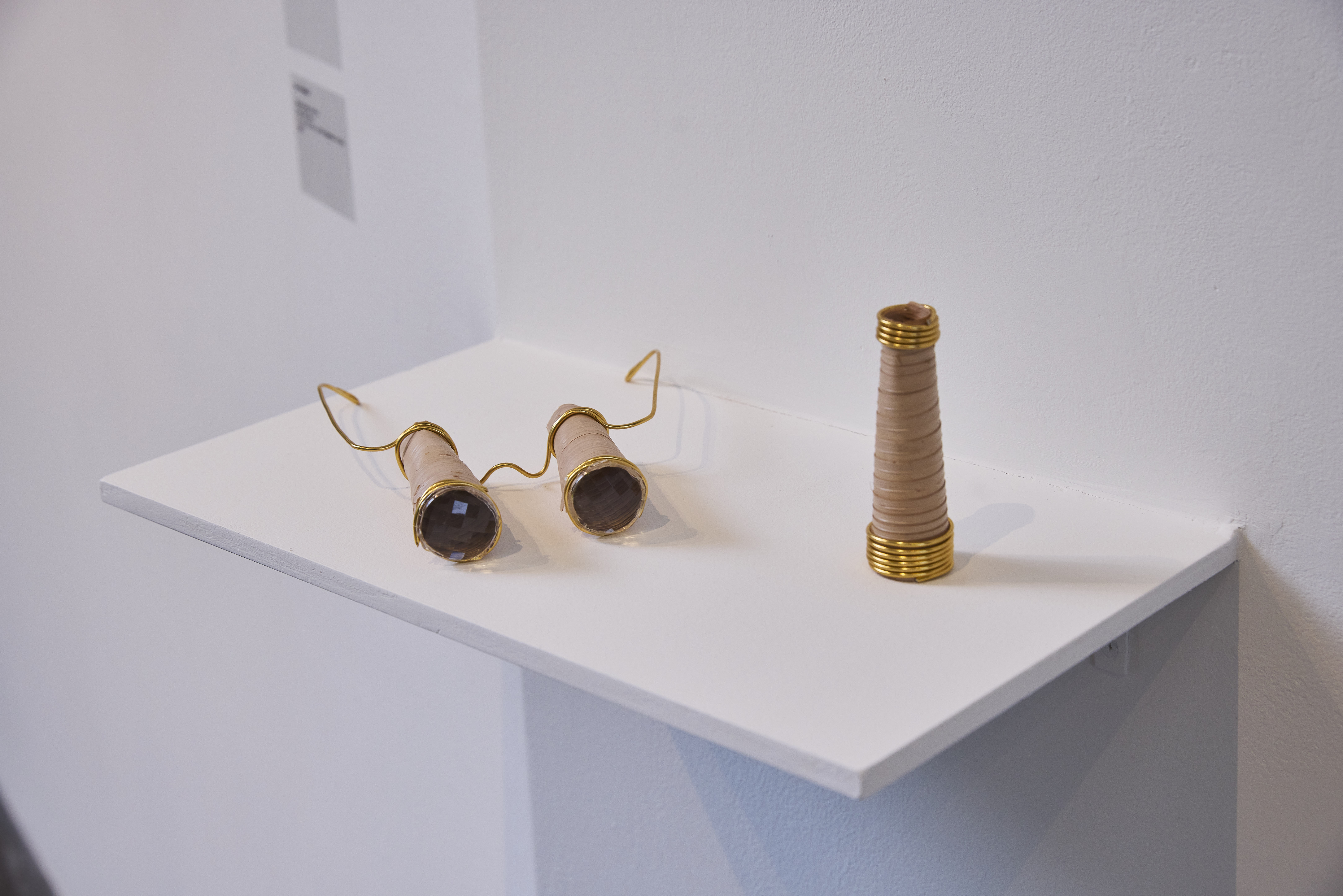
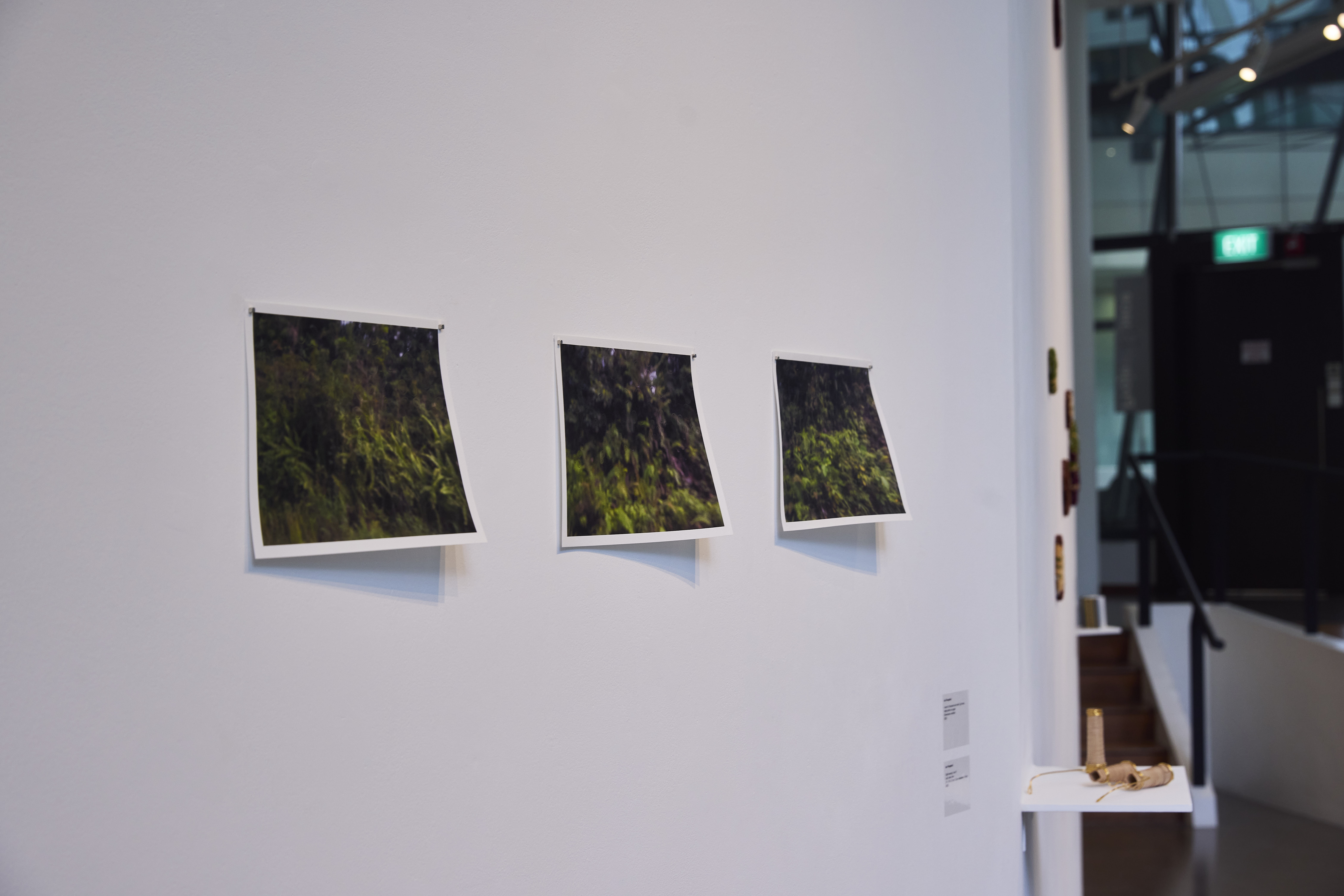
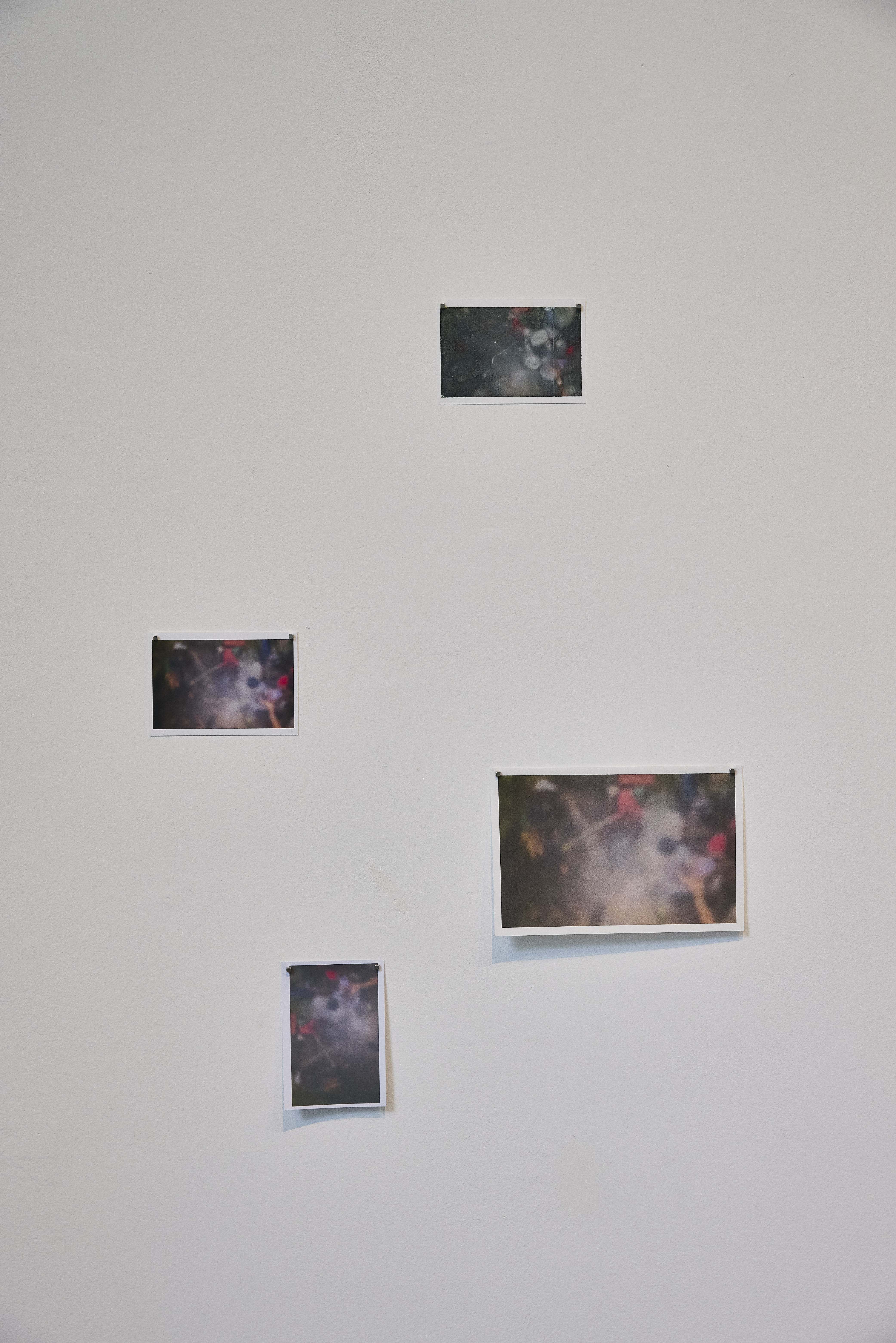
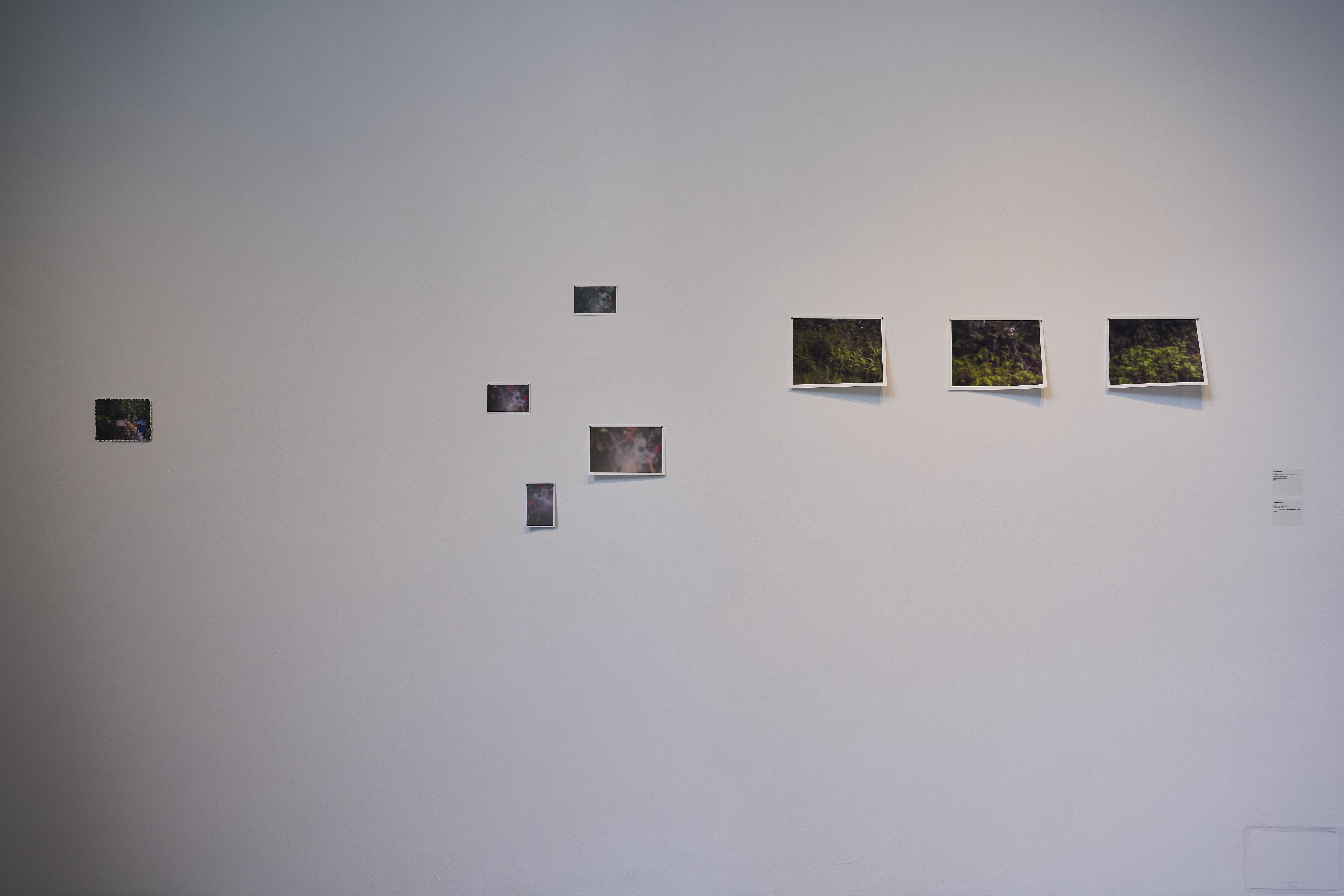
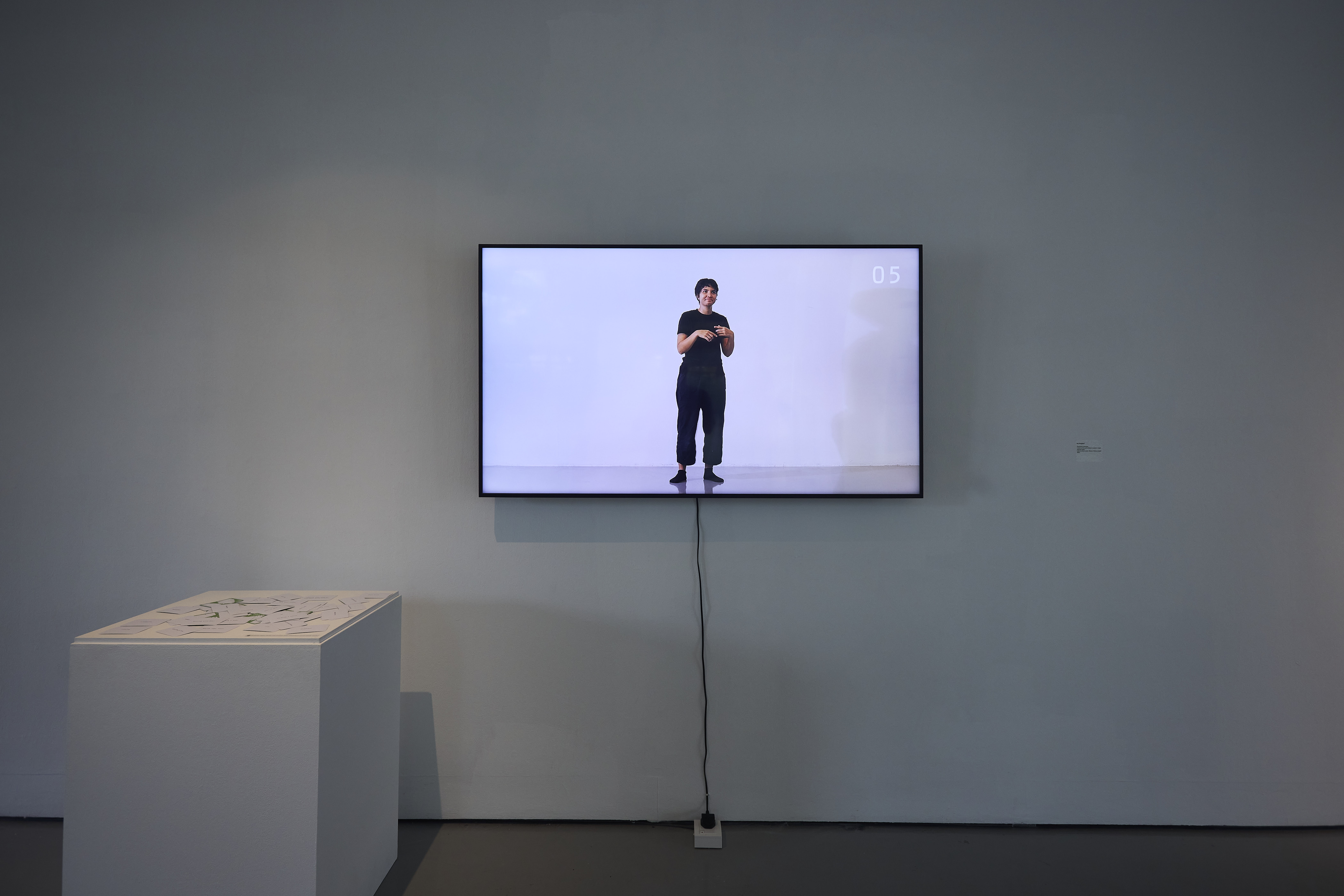
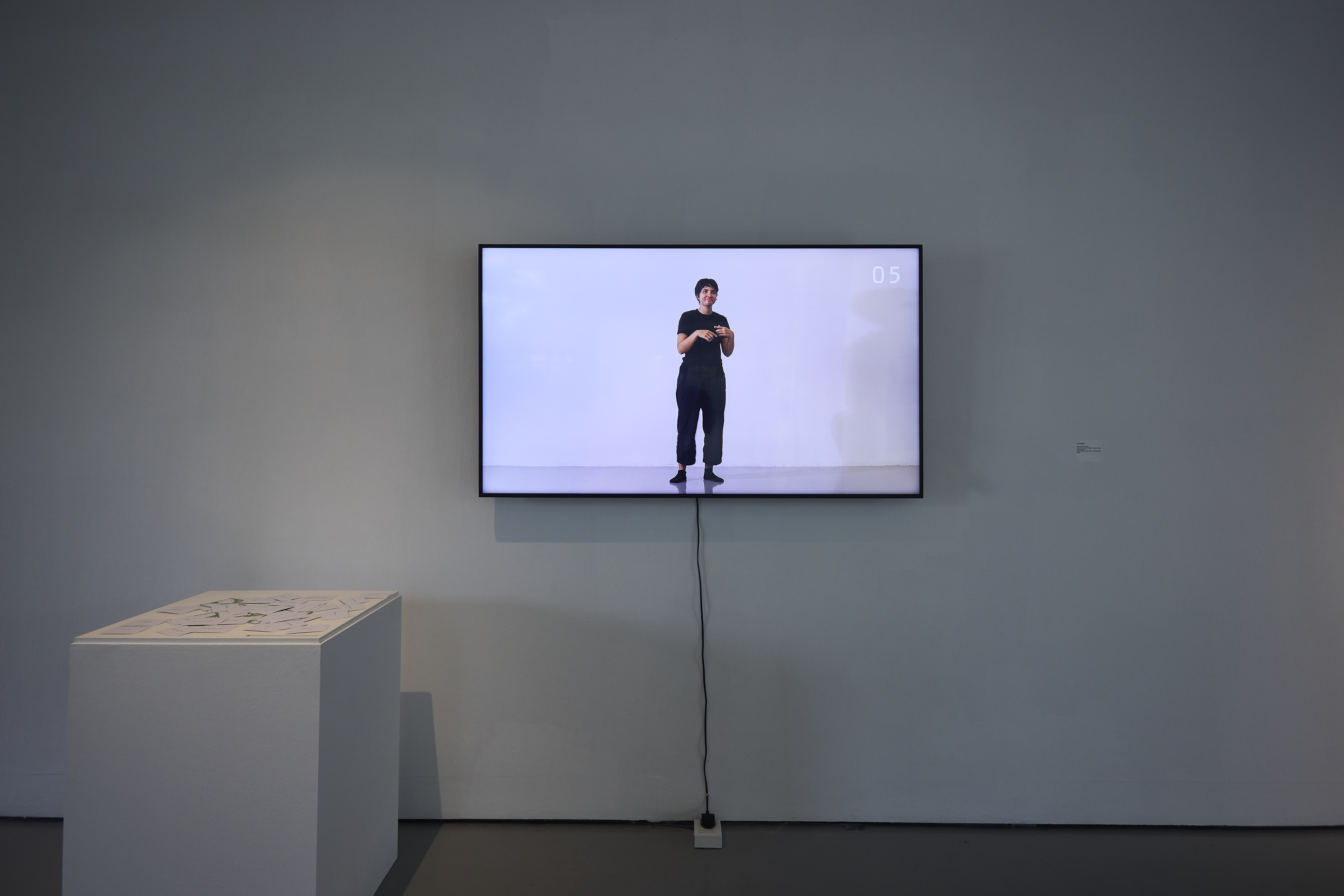
Koh Jia Ling
1. series 1 Relief Momentscape 2. series 2 Reilef Momentscape 3. series 3 Relief Momentscape 4. Unearthed
| 1. Lino relief print on fabric loosingly |
| 2. Lino cut on plywood shelf |
| 3. Lino tiles print on paper (multiple) |
| 4. chicken drumlet bone, pork rib bone, sharpen bones tie in knots |
| 1. 200cm x 200cm |
| 2. 200cm x 5/10cm |
| 3. 200cm x 10/20cm |
| 4. 100cm x 100cm |
| My aim to center my artworks on preserving the memories I've gained and lessons I've learned from my time in Sarawak. Relief momentscape encapsulates five unforgettable days that I spent exploring and embracing the unique lifestyle of Sarawak and the town betong in Sarawak. The dense lush rainforest and rustic longhouses of Sarawak's indigenous communities left an indelible mark in my head, and I've endeavoured to capture their communal spirit and warm hospitality in my artwork. The 15 Linoleum piece were being carved into different objects that reminded my of this trip. |
| The journey from sourcing rattan and bamboo in nature to preparing the materials involved the use of homemade tools. These tools were crafted from found objects around the house and materials gathered from the nearby rainforest. Accessing a hardware shop was a long and challenging journey, making it impractical and costly for artisans. Nevertheless, this did not deter them from creating beautifully woven objects. They relied on their resourcefulness, using materials like wood, stones, bones, leaves, and more to fashion practical tools. This serves as a reminder of our privilege in having easy access to materials today and reconnects us with our roots. |
